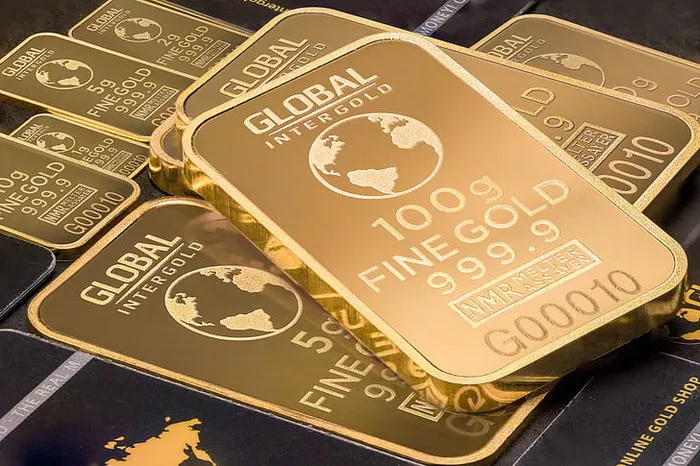Gold has long been regarded as a symbol of wealth and a safe haven asset, attracting investors and collectors alike. Understanding its historical price movements can provide valuable insights into market trends and economic conditions. This article delves into the price of gold in 1992, exploring the factors that influenced its value, key events of the year, and the broader economic context.
The Gold Market in the Early 1990s
Historical Context
The early 1990s marked a significant period for the gold market. The decade followed a period of volatility in the 1980s when gold prices fluctuated dramatically due to geopolitical tensions, inflation, and changes in monetary policy. By 1992, the market was experiencing a phase of relative stability but was still affected by various economic and political factors.
Key Economic Indicators
Inflation Rates: Inflation rates in the early 1990s were relatively low compared to the previous decade, influencing investor sentiment toward gold.
Interest Rates: The Federal Reserve’s monetary policy, including interest rates, played a crucial role in gold pricing. Lower interest rates often led to higher gold prices as the opportunity cost of holding non-yielding assets decreased.
Currency Values: The strength of the U.S. dollar significantly impacted gold prices, as gold is typically priced in dollars. A stronger dollar often resulted in lower gold prices and vice versa.
Gold Prices in 1992
Monthly Breakdown
In 1992, gold prices experienced fluctuations influenced by various factors, including geopolitical events, economic conditions, and investor sentiment. Here’s a monthly breakdown of the average gold prices in 1992:
January: $360.50
February: $362.00
March: $368.00
April: $374.00
May: $373.50
June: $354.50
July: $345.00
August: $345.50
September: $335.00
October: $325.00
November: $322.50
December: $329.00
Average Price for 1992
The average price of gold for the entire year of 1992 was approximately $348.20 per ounce. This figure reflects the broader trends and fluctuations that occurred throughout the year.
Factors Influencing Gold Prices in 1992
1. Geopolitical Events
The early 1990s saw significant geopolitical changes, particularly the dissolution of the Soviet Union and the Gulf War. These events led to increased uncertainty, which often drives investors toward gold as a safe haven.
Gulf War: The U.S.-led invasion of Kuwait in 1990 and the subsequent Gulf War in early 1991 caused fluctuations in oil prices and heightened geopolitical tensions, influencing gold prices in 1992.
2. Economic Conditions
Economic stability and growth in the U.S. and global markets impacted gold prices. A recovering economy often leads to reduced demand for gold as an investment.
Recession Recovery: The U.S. was emerging from a recession in the early 1990s, which affected consumer confidence and spending. As economic conditions improved, gold’s appeal as a hedge against economic instability diminished.
3. Central Bank Policies
Central banks play a critical role in the gold market through their buying and selling activities. In 1992, central banks were adjusting their gold reserves, impacting overall market supply and demand.
Gold Sales: The sale of gold reserves by several central banks, including the Bank of England, influenced market prices. Increased supply often leads to lower prices.
4. Investor Sentiment
Investor behavior and market psychology also significantly impact gold prices. In 1992, market sentiment was cautious, reflecting uncertainty in both geopolitical and economic arenas.
Market Speculation: Speculation regarding future economic conditions and potential inflation influenced investors’ decisions to buy or sell gold.
The Broader Economic Context
1. Global Economic Trends
In addition to domestic factors, global economic trends in 1992 affected gold prices. Economic growth in emerging markets and ongoing challenges in developed economies shaped investor behavior.
Emerging Markets: As economies in Asia and Latin America began to grow, demand for gold jewelry and investment increased, affecting prices.
2. Technological Advances
The early 1990s also saw technological advancements in mining and gold production, which influenced supply dynamics in the market.
Mining Innovations: Improvements in mining technology increased production efficiency, potentially leading to greater supply and impacting prices.
3. Investment Trends
Gold’s role as an investment asset was evolving in the early 1990s. The rise of gold exchange-traded funds (ETFs) and other investment vehicles began to shape market dynamics.
Investment Diversification: Investors began to view gold not just as a hedge against inflation but as a diversification tool within their portfolios.
Conclusion
The price of gold in 1992 reflects a complex interplay of geopolitical events, economic conditions, and investor sentiment. Averaging approximately $348.20 perounce, gold demonstrated both stability and fluctuations influenced by various factors. Understanding this historical context provides valuable insights for today’s investors and collectors, highlighting the importance of considering broader economic trends and market dynamics when evaluating gold as an asset.
As we look back on the price of gold in 1992, we can appreciate how far the market has come and how historical events continue to shape the value of this precious metal. Whether as a symbol of wealth or a reliable investment, gold remains a significant part of the financial landscape.
Related topics:
- The Price of Gold in 1991: A Comprehensive Overview
- The Price of Gold in 1988: A Historical Perspective
- The Price of Gold in 1987: A Historical Review


